Blair LaHaye, the Person in the Room
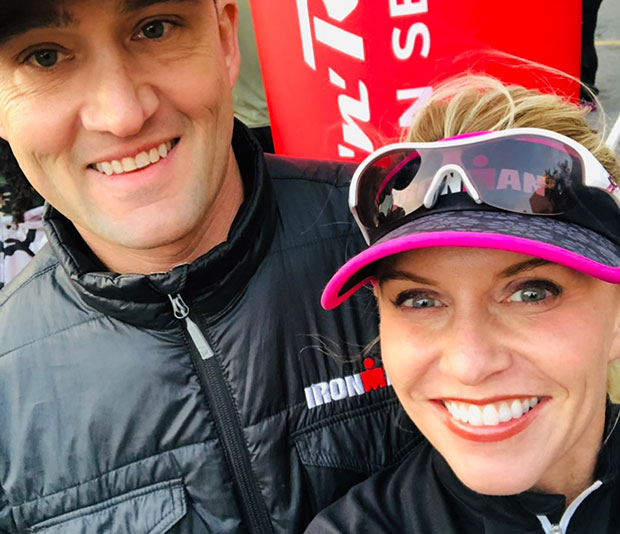
Most successful companies have highs and lows but in general it’s just a steady build. IRONMAN’s early growth relied on seminal moments, the first half-dozen or so serendipitous good luck: the famous saloon wager by a handful of Navy SEALs; the Sports Illustrated article by Barry McDermott that turned a beer bet into an Everest-sized must-do event; Julie Moss in 1982.
Then, there were the planned events, like Valerie Silk selling IRONMAN in 1989 to Dr. James Gills. There is one planned event, largely unreported, that was critical to the brand IRONMAN has become today: The decision in the mid-2000s by then-CEO Ben Fertic to pivot from being a licensing-focused company to an event production company.
Blair LaHaye was a key person “in the room” for that "moment". She was in charge of IRONMAN’s communications and messaging then and she set a standard and tone for how that job would be done by everyone who’s followed her. She now has that same task at CLASH Endurance, which is triathlon’s most obvious theme series. It’s not rock bands at every mile; it’s multisport events contested at many of America’s most popular sports venues: NASCAR tracks.
I wanted to talk to Blair about how she views mass participation triathlon, because most of us all look from the outside into this industry, but her lens sees from the inside out. She is married to Philip LaHaye, also formerly an IRONMAN executive, also now at CLASH Endurance. As a cheat sheet for the interview below it’s useful to know that Ellie Siefert was PR director at IRONMAN from 2013 to 2016, Andy Giancola has been the long time head of partnerhips at IRONMAN; Chris Stadler was Chief Marketing Officer, Diana Bertsch is a senior VP and specifically in charge of anything related to the Kona race experience; Steve Meckfessel was global managing director for IRONMAN from 2005 to 2016; Ben Fertic and Lew Friedland were both former IRONMAN CEOs; and Andrew Messick has been IRONMAN’s CEO since 2011. In the image below is a photo from our Tim Carlson of, left to right, Blair LaHaye's husband Philip, Fertic, Giancola and Meckfessel from the K-Swiss party in Kona in 2011.
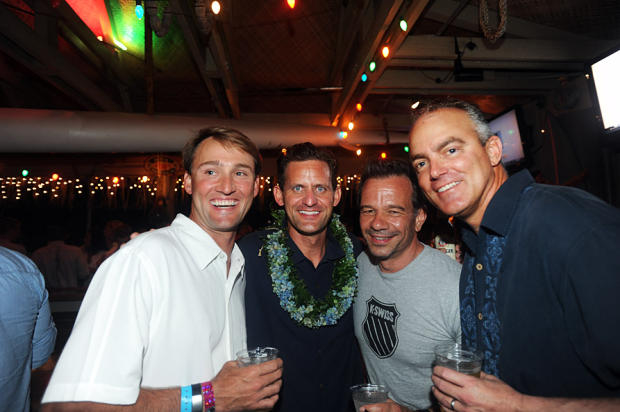
ST: When was your tenure at IRONMAN?
BLAIR LAHAYE: It started in 2003, I believe it was August, kind of a funny scenario, Philip and I got married, I left Atlanta and moved to Florida, happened to be on the IRONMAN website and it showed the PR position open. I was transitioning out of my agency role, I put my resume in, I met with Ben [Fertic] and Lew [Friedland] a few days after I submitted it, met with Pit Gills [son of IRONMAN’s owner, also a then-exec at IRONMAN], and started within 14 days.
ST: And you left?
BL: I left my full time role in 2010, in June, I went on maternity leave, I returned late in 2010 in more of a branding position and did that for about a year until Diana implemented the strike team. I served as media liaison there from 2012 to 2014.
ST: I remember three communication managers at IRONMAN that stick out to me. You, Priscilla Fraiegari, and Dan Berglund who still is there. I remember you as – how should I put it – the arse-kicker who made the medicine taste good. You ruled with a whip, but you were beloved and respected. Do you think you set a standard for those who followed you?
BL: That’s a funny question. I’m a people pleaser by nature, but people found me to have high expectations, demanding at times, but it’s funny because it’s perceived differently female versus male. This is not a negative statement, I just think there is a different standard for women to be in a powerful position versus a man. The way a demanding female is viewed can be different. That’s one thing. I don’t know if I set a standard. When I was there, there was so much growth and excitement going on, if there was a footprint left behind I hope it was a good one.
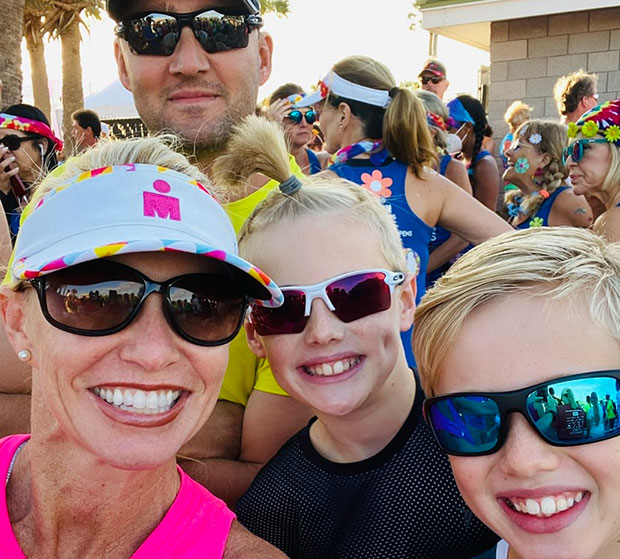
ST: In my memory, post-Valerie Silk, were David Voth, David Yates, Lew Friedland, Ben Fertic, and Andrew Messick. Who did you work under and what are your impressions now about the IRONMAN organization that you served?
BL: I didn’t have much time under Andrew. When Ellie Siefert was brought on that was the same window of time as Chris Stadler, that was maybe 2011 or 2012, I was brought in by Chris and Andrew to usher them all into Kona. That was my first experience working with Andrew, after which I was on the strike team, I worked more closely with Diana. Lew and I worked very closely with Ben.
ST: And do you think things are run about the same way, or do you think things have changed?
BL: That’s a complicated question. After I left Philip played a huge role in a leadership capacity. We spent two years in Australia as he managed the Oceania region, an experience that changed him and the path of his career. I feel blessed by that experience. Relative to how it’s being run I think COVID has thrown a wrench into the event landscape for all brands in the endurance space. I would just say my two biggest thoughts are that it’s how you face adversity that speaks to who you are as a company; that’s a big one for me; and more than anything how you treat your people. I think that’s key to the longevity of a brand, and the power and success of that brand.
ST: You and your husband Philip were both in the industry. You were IRONMAN’S brand voice; Philip ran the St. Anthony’s Triathlon for years, and now you’re working together again at CLASH. Is it an unqualified plus for both of you to be in the same industry, with the same client, or are there any drawbacks to that?
BL: I think we’re lucky. We both enjoy the sport so much, our kids love it too. While there are certainly times we’re pulling our hair out – including when we shared an office at IRONMAN – it’s a coincidence. Philip joined the CLASH team first, they had someone on their team who went on maternity leave, they brought me on to help with PR and media. Once I got into it I realized how much I did miss it. Not just writing but being on-site, being with media, just being in the sport again, you as an example, people I have fond memories of. Credentialing, announcements, partnerships, growth, doping, you name it, we’ve covered some of those subjects, it all came back like riding a bike. Also, have things have progressed since I left. I’m fortunate I can do this more as an independent contractor because now I have a family, for so long at IRONMAN it was an all-consuming position but now other things are part of that balance.
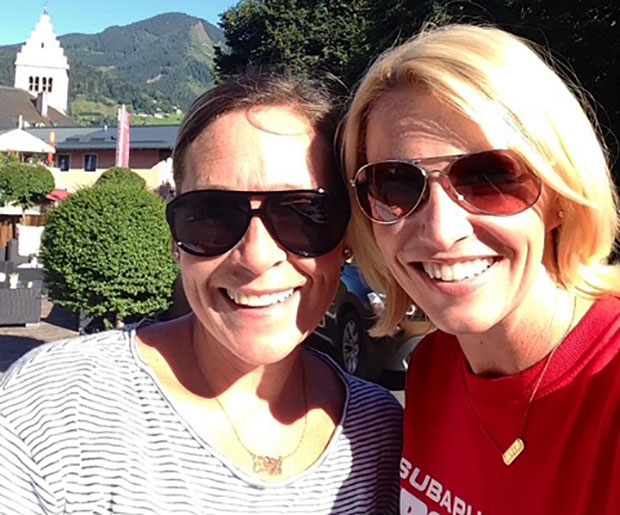
ST: Did you think you were long gone from handling the narrative of an endurance event brand?
BL: I don’t think so. Only because when Philip and I were overseas I had my hand in it, giving my opinion on things. There were times at St. Anthony’s when I was on site, with the kids, like another set of hands. If he would’ve changed industries after leaving IRONMAN maybe so. But we still race, my kids have a love and a passion, so I don’t think it was completely off the table because we’ve been active in the sport. Also I still talk to the people – Judy Molnar, Steve McFessell, Ellie Siefert (pictured with Blair above), I see Andy Giancola – I still have good connections with the people.
ST: What is the difference in approach between how the management of IRONMAN treated the brand narrative, and how CLASH treats the narrative?
BL: I think IRONMAN has a long history, relatively, in the endurance world, so I think one key component and one differentiator is that IRONMAN has a history whereas CLASH Endurance is a new brand. CLASH did have its collaboration with Challenge, they had a different view on where they wanted to take things, we agreed to go different ways, that’s what Challenge and CLASH chose to do. A key talking point for me for a long time was that IRONMAN is not for mere mortals. It’s not something anybody can do. IRONMAN grew a lot. IRONMAN was where marathoning was, the ultimate endurance test. IRONMAN is now that. That is a key point of difference with CLASH. CLASH does have swim, bike, run, but they take place at speedways and are not comparable to IRONMAN. CLASH wants to bring something to the sport that’s an experience for the entire family. Athletes will be changed after COVID, the way we choose activities, pursuing our passions in ways we didn’t before. That’s where CLASH is unique, watching Olympians test what they have in a place like a speedway. You can be out there also, as a competitor.
ST: With other brands, like CLASH Endurance and like the PTO with its just announced tour, there’s a different approach to media and media packaging and monetizing. Is that part of CLASH’s business model?
BL: We all recognize how important social strategy is. One of the biggest changes hands-down is the media landscape. We were not really dealing with blogs an IG and influencers [during Blair’s her IRONMAN tenure]. We might have been dealing with a pro’s agent but not with the digital landscape we’re dealing with now. To answer your question is, I hope so. I like to think we’re strategic in how we’re looking at our ties to NASCAR, leveraging the expertise, how they’re utilizing that media landscape, combining that with a handful of people who’ve been in the sport for a long time. As we grow, adding expertise to the digital front allows us to look at some new outreach avenues, as opposed to relying on traditional media.
ST: Do you find the customer is the same or different, IRONMAN to CLASH, and does that change your job as a curator of the message?
BL: There is some overlap, but the customer is slightly different. Similar demographics, but distances are not comparable. That said, CLASH serves as a great training platform for a 70.3 or a full. But there are a lot of AGers and first timers who enjoy short course, or who’re drawn to a speedway is key to the CLASH offering.



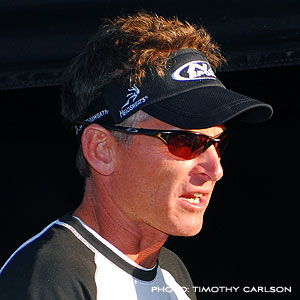
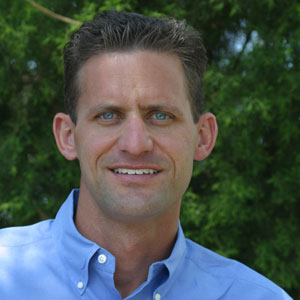
Start the discussion at slowtwitch.northend.network